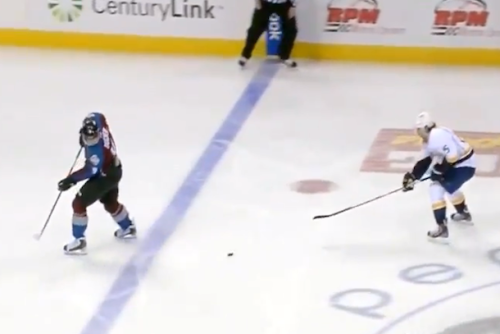NHL gets it right with new overtime format, challenge system

Those who despise the shootout did a little happy dance earlier this summer when the NHL Board of Governors approved the change to a new overtime format that will seem teams play 3-on-3.
Of course, simply changing the number of skaters per side from four to three doesn’t necessarily guarantee there will be fewer shootouts, but it’s a good place to start. The NHL has been stuck in a rut since the infamous lockout of 2004-05, which saw the introduction of overtime and the shootout to eliminate ties.
It wasn’t without merit – by removing ties, each game had to have a winner, which would greatly impact the standings – but it has done more harm than good. Often times, although they won’t admit it, teams will coast through the final minutes of a tie game – and even the five-minute overtime – to get to the shootout because it’s a crapshoot. That is to say, anyone can win.
The shootout is essentially just a skills competition, not a genuine indicator of a team’s real skill or superiority over the opposition. True, the shootout offers the opportunity for players such as Patrick Kane to showcase their innate talent in a way no other facet of the game allows them to. But weak teams should not be saved, when it comes to wins and losses, by the shootout.
More than just reducing the frequency of shootouts, 3-on-3 OT allows for more strategizing, especially when it comes to line combinations. Teams such as the Ottawa Senators and Montreal Canadiens – who boast Erik Karlsson and PK Subban respectively on the back end – have a decided advantage over other teams in the new overtime format.
Such is the power of what is one of the most valued pieces year-after-year: an offensive defenceman. In a 3-on-3 situation, sending out Subban is essentially like sending out a second forward who just so happens to be a responsible defender. To put it in simple terms: at its best, the 3-on-3 format will lead to more end-to-end action and, as a result, more odd man rushes.
The change to the overtime format wasn’t the only news to come from the Board of Governors meetings, though. In agreeing to also implement the coach’s challenge in the 2015-16 season, the NHL finally stepped into the modern era – albeit a few years too late.
Gone are the days of missed offsides leadings to goals – sorry, Matt Duchene – and phantom goalie interference calls preventing them – was that Casper behind Braden Holtby? Tomorrow brings new hope with the ability to take a second look at close plays (and, in so doing, hopefully get the call right).
As it is with any rule change, kinks are sure to emerge and the first season with the challenge system likely won’t be perfect. But just the fact the challenge is being given a chance is a step in the right direction for a league that tends to lag behind in such advances.
With the kind of technology the NHL has at its finger tips, adopting the challenge system was the only logical direction to take (and, as mentioned, it’s already a few years too late). The big question that can only be answered through trial and error, something Alain Vigneault addressed just after the Board of Governors meeting, is how it will be used.
Hockey’s fast-paced style (with few stoppages), and the fact the challenging team must have its timeout, means determining how and when to use the challenge will be an on-the-fly adjustment. But despite the uncertainty surrounding it, the addition of the challenge is positive if for no other reason than because there is a greater chance of getting the call right.
While the aforementioned changes look good on paper, only after they have been tried and tested in-game can they be called a success or failure.


